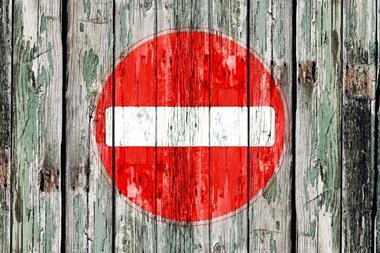According to the 1936 song by Johnny Burke, “Every time it rains, it rains pennies from heaven” – but this surely will not be the sentiment of flood victims and their insurers as they now try to recover from the UK's worst floods since 1947. In an uncanny re-enactment of Sebastian Junger's novel and film “Perfect Storm” the clouds that hung over large swathes of the country produced the heaviest rainfall since records began in 1766.
From the south-west of England to the east of Scotland more than 3,000 homes were flooded. The river Ouse in Yorkshire rose to its highest level since 1625; a farmer near Shrewsbury had to house his 20 Asian water buffalo calves in his living room, a tornado hit Bognor Regis and most of the rail network was either knocked out or severely disrupted. Standard & Poor's reckons the damage will cost between £1bn and £2bn, nearly equalling the record 1990 storms and floods. The cost to the national economy through lost production could be a further £1.5bn.
Washing across the country
In the past two years, 32 people have died in the UK as a result of floods, with 13 deaths recorded this autumn. This tragic toll pales into insignificance though, compared to the tens of thousands killed around the world in recent disasters – from the 1999 flooding in Orissa in India to the current flooding in Vietnam, which is the worst for 70 years.
Association of British Insurers (ABI) director-general Mary Francis stressed the need for better flood defences and a stop to irresponsible building on unprotected flood plains. The ABI's Climatic Change Report reckons there are between 950,000 and 1.2 million British homes in danger of flooding, where flood damage could potentially cost £35bn and which would directly affect five million people. In London alone, up to 100,000 homes are at risk.
Developers are routinely ignoring flood risks. The Environment Agency estimates that half the 90,000 planning applications each year involve land at risk from flooding. Where the agency advises against planning, local authorities are rejecting its advice in 44% of cases. It points out that developers have planning permission to build homes in flood risk areas totalling the size of Liverpool and that the three million new homes planned over the next 15 years will only add to the pressure.
In the wake of the recent flooding, described by John Prescott as “a wake-up call”, the government announced an extra £51m over four years to help councils improve flood defences. With annual spending on flood defences whittled down in recent years, and the annual cost of flood losses – insured and uninsured – averaging £600m, this additional cash is likely to be little more than a drop in the ocean.
Insurers are cautious of creating negative publicity by warning of reduced cover and increased premiums. But with experts predicting more frequent severe flooding, this outcome seems inevitable. A CGNU spokesman says that people who live on flood plains or in river valleys are likely to have to pay increased premiums. The Halifax, which arranges 1.6 million household policies, confirmed a similar approach.
Discrimination
Encouraged by reinsurers, who will bear the brunt of this autumn's claims, insurers will shortly make use of sophisticated flood maps, allowing them to discriminate far more effectively. This could lead to flood cover being unavailable in large parts of the country. Pressure would then mount for a US-style state insurance scheme to provide cover to those unable to purchase it in the conventional market.
The Environment Agency calculates that, as a result of climate change, there could be a tenfold increase in flood risk over the next century. They say that a typical flood that might now happen on average once in 100 years could occur as frequently as every ten or 20 years in the future. Sir John Harman, the agency's chairman, said: “Today's extreme floods could become tomorrow's norm.”
The causes of this increased risk are varied. The south-east of England is tilting into the sea by about four centimetres every decade. Some causes are clearly man-made though, such as building on flood plains, inadequate drainage systems and cutting back on flood defences. Reduced ground water extraction in the south east has resulted in higher water tables. Changing farming methods have also had an effect. Building design rarely takes the risk of flooding into account and the value of possessions exposed to damage is now that much greater.
The biggest impact on the risk of flooding however, is undoubtedly global warming. Although the weather fluctuates naturally most experts agree that the earth is getting hotter.
Record temperatures
The 1990s was the warmest decade on record and the European Environment Agency calculates that average temperatures have risen by 0.3 - 0.6ºC since 1900. The northern polar ice cap is only half the thickness it was 25 years ago and glaciers around the world have shrunk to their smallest size in 5,000 years.
The causes of global warming have divided experts. Reacting to Prince Charles' comment that “mankind's arrogance” had caused the recent violent storms and floods, Julian Morris, director of the Environment and Technology Programme at the Institute of Economic Affairs said: “Prince Charles has failed to learn the lesson of King Canute. The forces of nature were much more powerful than man's relatively puny input. These present storms are just a natural occurrence.”
Increased radiation from the sun coupled with a doubling in the strength of the sun's magnetic field (resulting in less cloud cover and therefore more heat reaching the earth's surface) may be more significant than the 25% rise in carbon dioxide levels since pre-industrial times. The Met Office's Hadley Centre for Climatic Prediction and Research supports this view and predicts that even with a massive 60% cut in CO2 emissions average temperatures would still rise by 2ºC by 2100, causing the sea level to rise by 30 centimetres.
However, cuts in CO2 emissions of just 5.2%, as discussed at the recent world climate negotiations in The Hague, would have virtually no effect on the projected 5ºC rise in temperature and 60 centimetre rise in sea level.
Environmentalists point to the sheer volume of greenhouse gases produced, particularly by industrialised countries. The US has 5% of the world's population but emits 25% of all gases. Britain alone generates 150 million tonnes of atmospheric CO2, about a third of which comes from road transport.
Whatever the causes of global warming, the consequences could be dire. It is not only the
low-lying Pacific islands facing annihilation from rising sea levels that have reason to be concerned. According to the University of East Anglia's Climatic Research Unit, southern Europe will face water shortages, forest fires and desert expansion while northern Europe, and Britain in particular, will become warmer with more frequent severe storms and floods.
The Met Office predicts that this will occur 50% faster than previously thought, because as temperatures rise, the earth's soils, vegetation and oceans will start to emit CO2 rather than absorbing it.
It is not just the weather that could be affected. Scientists at the British Antarctic Survey warn of an ozone hole appearing over the Arctic which would bathe the UK in cancer causing radiation. Researchers at Edinburgh University reckon that warmer autumns could cause an explosion of Scotland's midge population as they would be able to breed three times a year rather than the current two.
All doom and gloom?
On top of this there is a doomsday scenario which could see northern Europe return to the Ice Age. International research teams which have spent three decades drilling into Greenland's ice pack – which contains 10% of the world's fresh water – are able to analyse climate change over the past 110,000 years. Their research indicates that a small increase in temperature in the Arctic could shut off the flow of the Gulf Stream. This last happened 8,400 years ago when the remains of the Canadian ice sheet collapsed into the Hudson Bay.
As the Gulf Stream heads north to the Arctic it cools and sinks to the ocean depths. Flowing back along the ocean bed it draws warm southerly waters to replace it. A large influx of fresh water would, however, freeze on the surface rather than sinking and returning south, so halting the whole process. The British Isles would then experience the same sort of weather as northern Canada, with temperatures as low as minus 50ºC and snow for nine months of the year.
With the polar ice cap shrinking each year, researchers say this could happen within a generation. At least that would put paid to the midges.
Ancient astrologers predicted massive upheavals at the start of the Age of Aquarius. It will not be long before we find out if they were right.
Hosted by comedian and actor Tom Allen, 34 Gold, 23 Silver and 22 Bronze awards were handed out across an amazing 34 categories recognising brilliance and innovation right across the breadth of UK general insurance.













































